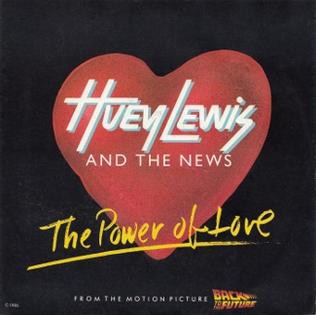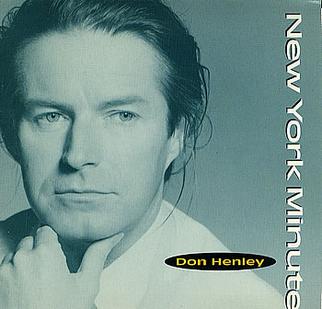 The mid-1980s was a fertile ground for pop music, with synthesizers, bright melodies, and youthful energy shaping the sound of a generation. Among the many stars who lit up the charts was Tiffany Darwish—known simply as Tiffany—a teenage singer whose breakthrough hit “I Think We’re Alone Now” became an emblem of youthful rebellion, innocent romance, and the vibrant culture of mall music. Released in 1987, Tiffany’s cover of the 1967 song originally performed by Tommy James and the Shondells not only launched her career but also became a defining anthem of the decade, bridging generational gaps and redefining how pop music connected with teenagers. The story behind the song, its cultural impact, and Tiffany’s rise to stardom highlight the shifting landscape of 1980s pop and the power of reinvention.
The mid-1980s was a fertile ground for pop music, with synthesizers, bright melodies, and youthful energy shaping the sound of a generation. Among the many stars who lit up the charts was Tiffany Darwish—known simply as Tiffany—a teenage singer whose breakthrough hit “I Think We’re Alone Now” became an emblem of youthful rebellion, innocent romance, and the vibrant culture of mall music. Released in 1987, Tiffany’s cover of the 1967 song originally performed by Tommy James and the Shondells not only launched her career but also became a defining anthem of the decade, bridging generational gaps and redefining how pop music connected with teenagers. The story behind the song, its cultural impact, and Tiffany’s rise to stardom highlight the shifting landscape of 1980s pop and the power of reinvention.
“I Think We’re Alone Now” was originally penned and performed by Tommy James and the Shondells, hitting the charts in 1967 with a bubblegum pop and rock flavor characteristic of that era. The original song’s lyrics centered on teenage secrecy, a private love hidden from prying eyes—“Children behave, that’s what they say when we’re playing games”—capturing the universal thrill of young romance and the desire for privacy from adults. It was a catchy, lighthearted track that found success in its own right, reaching number four on the Billboard Hot 100. But it was Tiffany’s 1987 reimagining that would propel it to a whole new level, turning it into a global phenomenon.
Tiffany’s version was produced by George Tobin and Mike Piccirillo, with a distinctly 1980s sheen. The arrangement traded the original’s classic rock instrumentation for synthesizers, drum machines, and the glossy, upbeat production that typified the decade’s pop landscape. The song was recorded when Tiffany was only sixteen, embodying the innocence and vibrancy of teenage life. Her youthful, breathy vocals brought a fresh perspective, and her version resonated deeply with a new generation of listeners. It was not merely a nostalgic cover; it was a reinvention.
One of the most remarkable aspects of Tiffany’s ascent was her groundbreaking marketing strategy, which involved performing at shopping malls across the United States. These “mall tours” were innovative and perfectly targeted, connecting directly with the core demographic of teenage girls and boys who frequented these consumer hubs. The approach paid off spectacularly, as her performances generated enormous buzz and record sales, turning “I Think We’re Alone Now” into a mall anthem, a soundtrack for adolescent independence and discovery.
When the single hit radio in the summer of 1987, it quickly climbed the charts. It reached number one on the Billboard Hot 100 in November 1987, making Tiffany the youngest female artist to top the chart in the 1980s at just 16 years old. The song also achieved international success, reaching number one in several countries including the United Kingdom, Canada, and Japan. Its universal appeal stemmed from its relatable theme, catchy melody, and the fresh pop sound that defined the era.
Lyrically, “I Think We’re Alone Now” taps into the secret thrill of a clandestine romance, the idea that when the world isn’t watching, two young lovers can share moments of unguarded intimacy. The line “Don’t run away, ‘cause I’m gonna make you stay” encapsulates the nervous excitement and hopeful persistence of teenage love. Tiffany’s vocal delivery made these sentiments feel authentic and accessible, as if she were speaking directly to teenagers navigating their first relationships. The song became more than just entertainment; it became a cultural touchstone that reflected and amplified the experiences of youth.
Beyond the song itself, Tiffany’s image was carefully crafted to appeal to her target audience. She presented herself as a girl-next-door figure—relatable, down-to-earth, and approachable—qualities that contrasted with the more polished or glamorous pop stars of the time. Her style, marked by casual fashion, long hair, and a warm smile, resonated with teenagers who saw her as one of their own. This authenticity was a key ingredient in her success and contributed to the enduring popularity of “I Think We’re Alone Now.”
The music video, directed by Dominic Sena, further cemented the song’s place in pop culture. It featured Tiffany performing in a stylized mall setting, capturing the youthful energy and consumer culture of the 1980s. The visuals emphasized the themes of freedom and privacy within a bustling public space, aligning perfectly with the song’s lyrics. MTV airplay was significant in spreading the track’s popularity, as the channel had become a powerful platform for reaching young audiences.
Tiffany’s rise also reflected broader changes in the music industry during the 1980s. The decade was characterized by a growing emphasis on visual presentation and direct engagement with fans, often mediated through television and live appearances. Tiffany’s mall tour was a novel way of harnessing this trend, putting her in direct contact with her audience and bypassing traditional concert venues. This strategy inspired other artists to pursue similar grassroots connections, influencing how pop stars cultivated their fanbases.
While “I Think We’re Alone Now” was Tiffany’s signature hit, it was part of a larger debut album, Tiffany, which included other successful singles like “Could’ve Been” and “I Saw Him Standing There.” The album was certified quadruple platinum, underscoring her widespread appeal and the commercial viability of her pop approach. Yet, despite her early success, Tiffany’s career faced challenges in the years that followed, as musical tastes shifted and the industry evolved. Nevertheless, her impact through this song remains indelible.
The song has also seen continued cultural relevance through covers and appearances in films and television. Notably, the 2001 cover by teen pop artist Tiffany herself was followed by a well-known cover by the pop duo The Rubinoos. Moreover, the song featured in popular media such as Ready Player One (2018), introducing it to a new generation and highlighting its lasting resonance.
Analyzing “I Think We’re Alone Now” reveals its unique balance between innocence and subtle rebellion. It acknowledges the tension between youthful desire and societal expectations, especially parental oversight, without crossing into overt controversy. This balance made it radio-friendly while still capturing the emotional landscape of adolescence. The song provided teenagers with a sense of identity and belonging, wrapped in an irresistible pop package.
Musically, the song exemplifies the late ’80s pop production style. The use of synthesizers creates a bright, shimmering backdrop, while the programmed drums give it a steady dance beat. The arrangement is clean and uncluttered, allowing Tiffany’s vocals to take center stage. The catchy chorus, with its repetitive hook, encourages sing-alongs and memorability, factors essential for chart success. The song’s structure is tight and efficient, with a concise runtime that fits the pop single format perfectly.
“I Think We’re Alone Now” also fits into a lineage of pop songs that reimagine and revitalize earlier hits. By taking a nearly two-decade-old track and reworking it for a contemporary audience, Tiffany and her production team demonstrated how reinterpretation could breathe new life into existing material. This approach would become increasingly common in the music industry, with artists regularly covering or sampling older songs to bridge generational divides.
The song’s success had a broader cultural impact as well. It contributed to the mainstream acceptance of teen pop artists and highlighted the commercial potential of marketing directly to adolescent consumers. This trend paved the way for future teen pop sensations in the 1990s and 2000s, from Britney Spears to *NSYNC and beyond. Tiffany’s breakthrough helped prove that teenagers were not just passive consumers but active drivers of pop culture.
Moreover, “I Think We’re Alone Now” reflects the optimism and vibrancy of the 1980s youth culture. It captures a moment when music, fashion, and media converged to create a distinct teenage experience, defined by malls, music videos, and an emerging global pop scene. The song’s enduring popularity underscores its ability to evoke nostalgia while remaining fresh and accessible to new listeners.
While Tiffany’s career would later explore different musical directions and personal challenges, “I Think We’re Alone Now” remains her defining achievement. The song is more than a catchy tune; it is a symbol of a particular time and place, a snapshot of adolescent yearning and pop reinvention. It reminds us how music can capture the essence of youth—the excitement, the secrecy, the dreams—packaged in a form that resonates across generations.
Ultimately, “I Think We’re Alone Now” is a testament to the power of transformation in music. From its origins in the 1960s to its rebirth in the 1980s, and its continued presence in popular culture today, the song exemplifies how a well-crafted tune can evolve and endure. Tiffany’s spirited rendition immortalized it as an anthem of teenage independence, forever linking the excitement of young love with the pulsating energy of pop.
The song’s legacy continues to inspire artists and listeners alike, serving as a reminder that music’s greatest strength lies in its ability to adapt and connect across time. “I Think We’re Alone Now” will forever stand as a vibrant emblem of the dreams, hopes, and secret moments that define adolescence, carried on the voices of generations past, present, and future.


